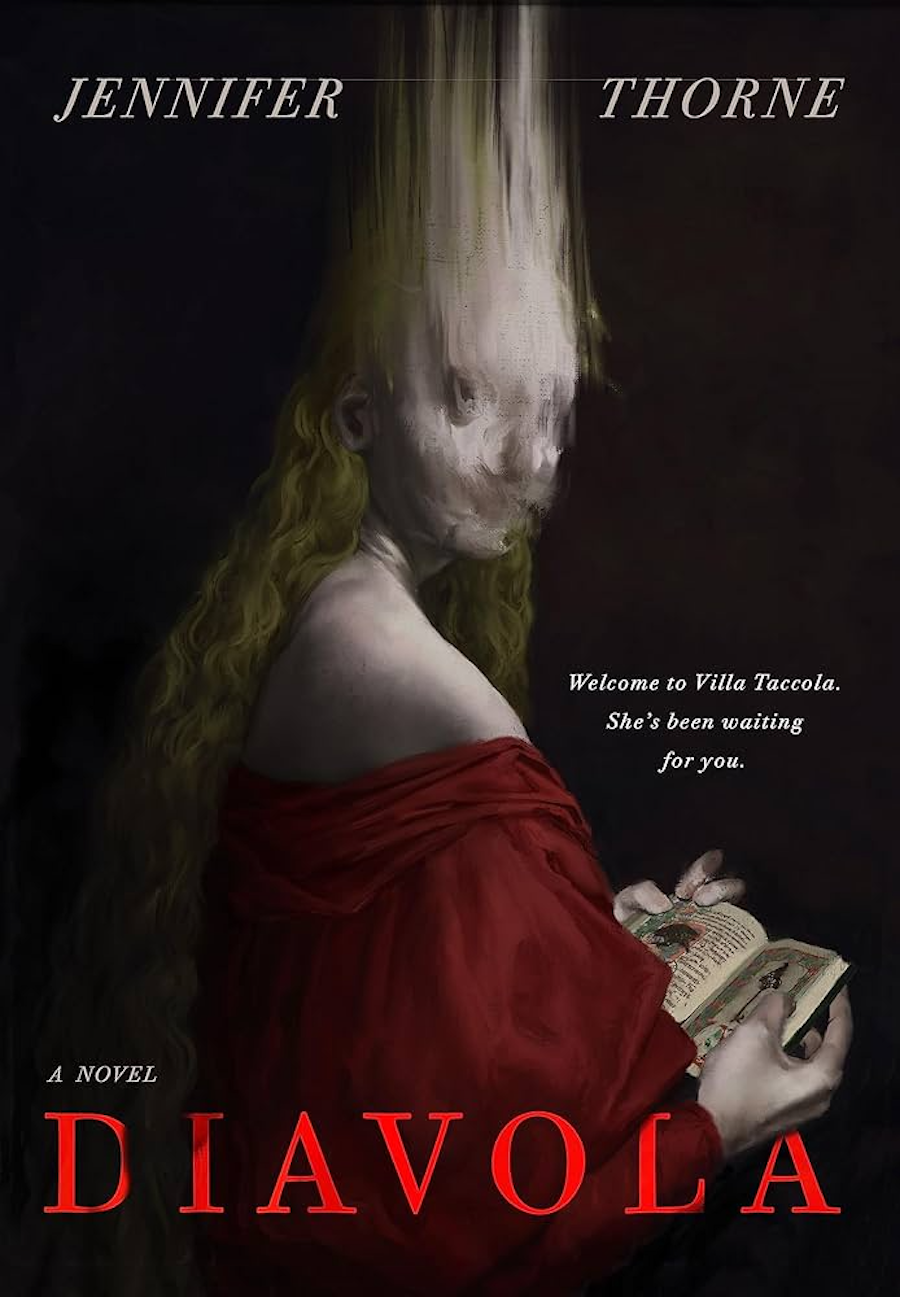It was a three-day drive to cross from Maryland to New Mexico. While making our way west, somewhere between my brother’s home in Texas and our final destination Albuquerque, Spotify suggested an audiobook called Diavola by Jennifer Thorne. I was hesitant. I don’t particularly love audiobooks, and I’d just finished listening to Octavia Butler’s Parable of the Sower on a whim, leaving my desire to read mediated for the time. Still, this book fell into my lap like temptation. I was enthralled by its cover, a woman’s face twisted and obscured. It was fate, I decided, that this book had found me.
Described as a “vacation Gothic,” The story follows a young woman and her family as they vacation in Italy, staying in an old mansion converted into a tourist’s hostel. The family is horrible to Anna, the main character, constantly taking the blame for whatever inconvenience has befallen the others. She is, however, the only competent one among them, and as such, is the first to understand that the mansion in which they are staying is haunted. It’s not exactly a revelation to the reader after the inflow of archetypal haunting events such as locals telling Anna and her family to avoid that building, to not unlock a tower door; these warnings are all punctuated with the constant state of rot the family’s food seems to endure.
What truly captivated me, however, was the book’s use of the uncanny, a common feature in Gothic literature. The uncanny has become one of the most vital parts of the Gothic to me, specifically moments in literature which force the characters, and by extension the reader, to recognize a horrible truth, to see the self in the other. Within the story of Diavola, there is a day no one remembers, every family member believing they know what happened but giving different, hazy accounts of the day’s events. After the haunting is revealed and the family makes it to safety, there is still no account for this missing day. Finally, as Anna comes to understand the haunting has followed her, the apparition reveals to her what exactly her family did in those missing hours, and it is demented.
These final revelations became the soundtrack to my exploration of Albuquerque. As I explored the city, I listened to these stomach churning descriptions of children vomiting red wine, an apparition’s decaying body, and a night of evil debauchery forgotten by Anna’s family. The dependence upon the uncanny to carry the final act of the novel became a frightening mirror to my own unfamiliar surroundings. I was alone in a new city, the grueling drive giving way to the thrill of the unknown as I rode through the streets on bike, bus, and car, all the while listening to the final, gut-wrenching moments of Diavola.
For anyone seeking a truly disturbed narrative, a frustrating family structure, or even just a good scare, I fully recommend picking up a copy. This book has quickly become one of my all-time favorites and provides an enthralling twist on the classic haunted house. Thorne’s ability to deliver a riveting and fresh ghost ghost story leaves us with something truly stomach-churning, and I highly encourage anyone even remotely interested to give the book a try.




